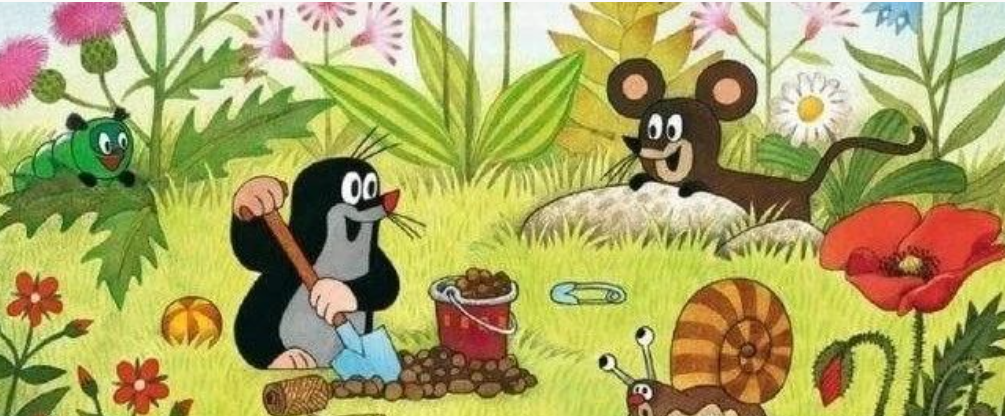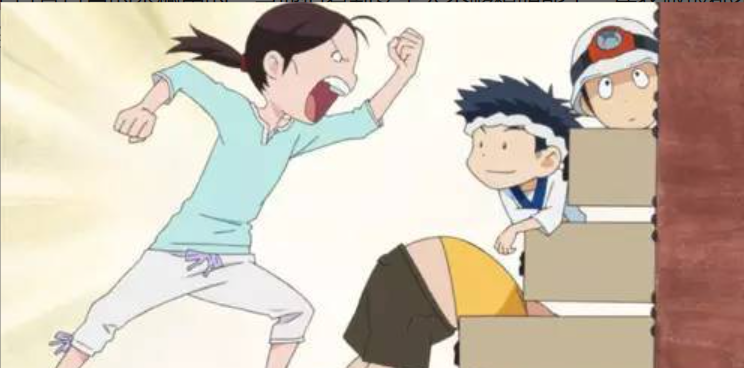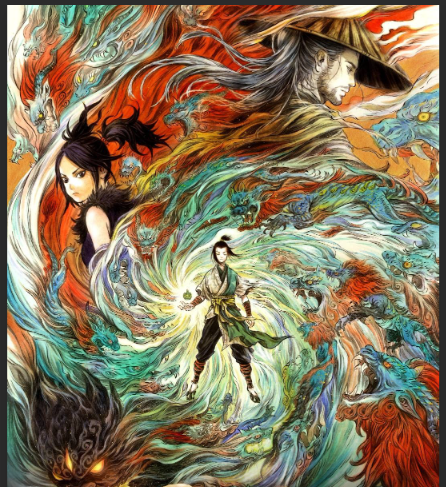
A Mole’s Tale: A gem of Czech anime
In 1956, a Czech animator named Zeneca Miller was walking through the jungle west of Prague when he accidentally tripped over a mole hole. But what no one expected was that the fall turned out to be a cartoon character that has been popular around the world for more than 50 years and is loved by millions of children – Little Mole.
In an interview with Czech public radio in 2006, Mr. Miller said he told himself “this is it.” At that time, the animation of the world was influenced by Disney in the United States. Disney put almost all kinds of animals in his works, except moles. Miller, who likes to be unconventional and does not like to copy others, valued this and decided to make the Mole cartoon.
Zeneca Miller was born on February 21, 1921, in Klan, a suburb of Prague. In 1936 he studied at the National Academy of Fine Arts in Prague and in 1938 transferred to the University of Arts and Crafts in Prague to study painting, although he was suspended for taking part in protests against the invasion of fascist Germany. Before World War II, he began to study and produce professional animation at an animation studio in Grin. After World War II, he joined the animation studio formed by Trina, who is known as the father of Czech animation. There, his talents were put to full use: he began as a draftsman and soon moved into writing and directing roles, eventually becoming the head of the studio.
During the initial animation process, master Trunk had a strong influence on Miller. Trunk is the founder of Czech puppet animation and an important representative of Czech children’s art before and after World War II. He does not advocate making children’s picture books in a minimalist style. He believes that there is only one kind of art in the world. There is no difference between the art of adults and that of children, and children can understand his interpretation of the world in a modern painting style. However, in my opinion, Trench’s greatest contribution to Czech animation and even to children’s art is to incorporate a poetic quality into his works, rather than simply inherits the Czech classical or national style. Miller understands this poetic expression so well that his work is as beautiful as listening to a poem read aloud.
In 1948, Miller made his directorial debut with The Millionaire Who Stole the Sun, which won a special prize at the Venice International Film Festival. He made a name for himself in 1957 when the first episode of The Mole, “The Mole and the Pants”, won a silver award at the Venice International Film Festival. In his animation, Mole never speaks, only gives a hearty laugh, and he always uses rich body language to express his character’s emotions. This setting, combined with the emphasis on background music that Eastern European animation has always had, makes it very easy for audiences from all over the world to have a spiritual interaction with the work.
The Mole was originally made as a short film before a feature film. Its second short film came a few years after the first, in the 1960s. But its popularity also grew with the spread of television in the 1960s. Since 1965, there has been a special program on Czech television broadcasting cartoons at 7 p.m. every day. “The Mole” has become a popular program throughout the country. Before going to bed, the children watched the mole’s funny actions. When they fell asleep, they continued to dream about the Mole.
Czech literary and artistic works at that time were greatly constrained in the expression of themes, and it can be said that the only free expression in those years was children’s works. Artists in this field are undoubtedly the happiest. They have integrated their hopes for the future into their works, used the paintbrush to show their sincere feelings for the next generation of the motherland, and expressed all their talents and techniques without reservation. These children’s works are completely different from the Japanese and American animations that are full of violent scenes and violent remarks. They pursue the true appearance of things, reflect the kindness of nature, and convey a kind of elegance and gentleness. For children, they are really the most universal, safe and harmonious content. “The Mole’s Story” is one of the representative works.
Today, the Czech Republic still has the original animation program. In addition to the new animation, the old animation is also repeated over and over again. The Mole’s Story has thus been watched, known, and loved by new generations of children. The children who grew up watching the cartoon are now parents who watch it with their children. This feeling has never been broken, which is why “The Mole” is a Czech national treasure.
In addition to the animation, The Mole also has its own picture book. In fact, Czech animators are often picture book painters, which is different from other countries where practitioners of the two arts are relatively separate. This Trans boundary may have something to do with the education and awareness that Czech animators receive. In the Czech Republic, one of the world’s most famous picture book countries, “The Mole” has become a classic long-selling book with its fresh and innocent atmosphere, read and treasured by generations. To date, its books have been translated into more than 20 languages and sold 5 million copies.
We are glad to see that Relay Publishing House has introduced the book “The Story of the Mole”, which gives Chinese readers the opportunity to have access to Zeneca Miller’s jungle scenes full of Czech national color, human interest character setting, and the story full of deep feeling and poetry. Let’s use this set of books to commemorate the passing of the Czech animator!
Zeneca Miller said on his deathbed: I’ve been drawing little moles all my life, and I finally realized that I was drawing myself.


